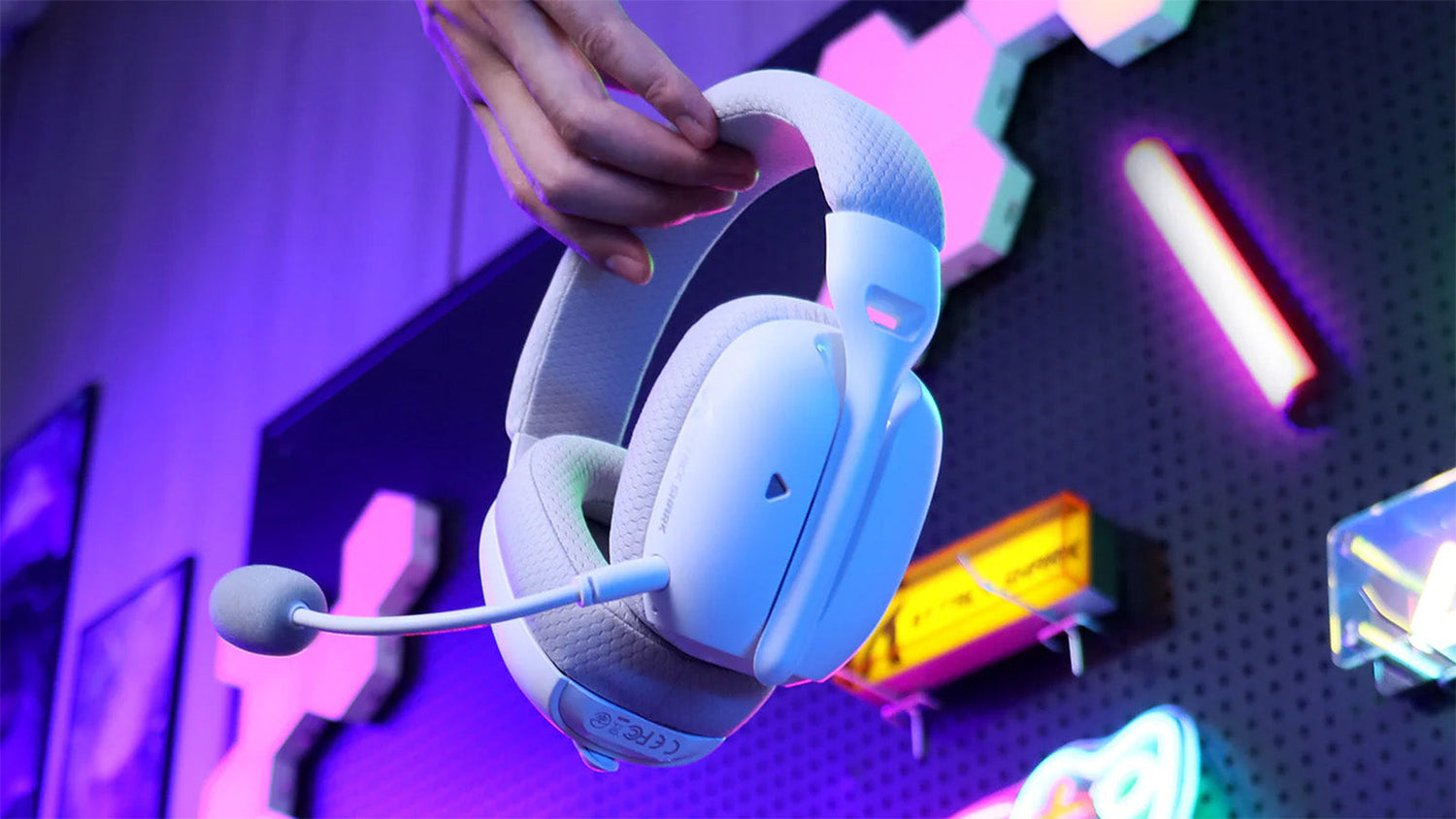When you play immersive games, the sound quality of your gaming headset is equally as important as the sights on the screen. Choosing between stereo and surround sound is one of the most important choices you'll have to make. Both have their pros and cons, but knowing how they are different, how they work, and which one is best for your style of play may make a big difference in how you play. Let's go over everything you need to know about different audio formats on a gaming headset.

Stereo Audio in a Gaming Headset: The Foundation
The most popular and basic audio format is stereo. This implies that a Gaming Headset has two separate audio channels, one for each earcup. This configuration lets you hear fundamental directional signals. When sounds are presented equally in both ears, they may seem to originate from your left, your right, or somewhere in the middle.
Even with high-quality stereo headsets, you can still get great sound imaging. You can tell where sounds are coming from and how far away they are with quite good precision, particularly if the game's audio engine is well-designed. A excellent stereo gaming headset provides clean, accurate sound without being too complicated for a lot of players. This focus on clear audio delivery is one of the core reasons many gamers rely on headsets in the first place, appreciating the various advantages they bring to the gaming experience.
Surround Sound in a Gaming Headset: Creating a 3D Soundscape
Surround sound aims to create a more immersive, three-dimensional audio experience. Instead of just left and right, it attempts to simulate sounds coming from multiple directions – front, back, sides, and sometimes even above or below. There are two main ways a Gaming Headset achieves this:
- True Surround Sound: This involves multiple smaller drivers (speakers) physically placed within each earcup, each dedicated to a specific channel (e.g., front, center, rear, subwoofer for a 5.1 or 7.1 setup). This is less common due to the complexity, cost, and potential for compromised individual driver quality.
- Virtual Surround Sound (VSS): This is far more prevalent in gaming headsets. VSS takes a standard stereo headset (with one driver per ear) and uses sophisticated software algorithms (like Dolby Atmos for Headphones, DTS Headphone:X, or Windows Sonic) to process multi-channel audio signals. These algorithms then manipulate the sound timing, frequency, and reverberation to trick your brain into perceiving sound as coming from multiple directions.

How Virtual Surround Sound Works in Your Gaming Headset
Virtual surround sound in a Gaming Headset relies heavily on psychoacoustics – the study of how humans perceive sound. The software analyzes the game's multi-channel audio output (e.g., a 7.1 signal) and uses Head-Related Transfer Functions (HRTFs). HRTFs model how sound waves interact with our head, ears, and torso before reaching our eardrums. By applying these models, the software can modify the stereo output to simulate sound arriving from different angles, creating the illusion of a wider, more encompassing soundstage than a standard stereo Gaming Headset could produce on its own.
Pros and Cons: Stereo Gaming Headset
Pros:
- Often offers better raw audio quality for the price, as manufacturers can invest in two high-quality drivers rather than multiple smaller ones or complex software.
- Generally simpler to set up – plug and play.
- Can provide excellent positional audio if the game has good stereo sound design (binaural audio in particular).
- Preferred by some competitive FPS players for its clarity and less processed sound.
Cons:
- Directional cues are limited primarily to the left-right horizontal plane. Distinguishing front from back or verticality can be more challenging compared to well-implemented surround sound.

Pros and Cons: Surround Sound Gaming Headset (Primarily Virtual)
Pros:
- Can offer enhanced immersion, making game worlds feel more expansive and alive.
- Potentially improved positional awareness, especially for sounds coming from behind or from obtuse angles, which can provide a competitive edge in some games.
- Often comes with customizable software EQ and profiles.
Cons:
- The quality of virtual surround sound can vary wildly depending on the implementation. Poor VSS can sound artificial, "echoey," or muddled, sometimes even degrading overall audio clarity.
- May introduce a slight audio processing delay, though usually negligible.
- "True" surround sound headsets can be bulky and may not offer the best individual driver quality for the price.
Which is Better for Your Gaming Headset?
The ideal choice can depend on the types of games you play most:
Competitive FPS (First-Person Shooters)
Many pro players and purists still prefer high-quality stereo headsets. They value the clean, unaltered audio for precise footstep and gunshot localization. However, well-implemented VSS (like Dolby Atmos) is gaining traction as it can offer good verticality cues.
Open-World RPGs & Adventure Games
Virtual surround sound can significantly enhance the immersion in these titles, making vast environments feel more alive with ambient sounds and distant cues.
Racing & Flight Simulators
Surround sound can add to the realism, helping you place other vehicles or environmental sounds more accurately around you.
Music & Movies
While a Gaming Headset is primarily for gaming, if you also use it for media, stereo often provides a more natural and accurate representation for music. Some VSS can enhance movies, though.
Software vs. Hardware-Based Surround Sound in a Gaming Headset
Most gaming headsets that have virtual surround sound require software to do it. This may be the headset's own proprietary software or third-party software like Dolby Atmos for Headphones or DTS Headphone X, which can be bought and used with any stereo headset. Some headsets come with a separate USB sound card or dongle that does the VSS processing outside of the headset. This may occasionally give you more consistent results on various PCs. It's more crucial that the algorithm works well than whether it's just software on your PC or processed via an external dongle.
In the end, the "best" audio for your gaming headset is a matter of personal preference. It might be sound quality, immersion, or an advantage in competition. Many high-end stereo headsets have great spatial audio because they have strong drivers and game design. If you want surround sound, seek for good VSS implementations and, if possible, check them out before you purchase or read a lot of reviews. Don't think that surround sound is always better; a high-quality stereo gaming headset may frequently sound better than a low-quality surround sound headset. Taking the time to explore options that truly level up your audio gaming experience, considering factors beyond just stereo or surround, is often worthwhile.






Leave a comment
This site is protected by hCaptcha and the hCaptcha Privacy Policy and Terms of Service apply.